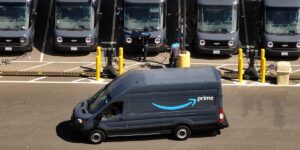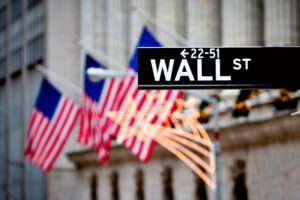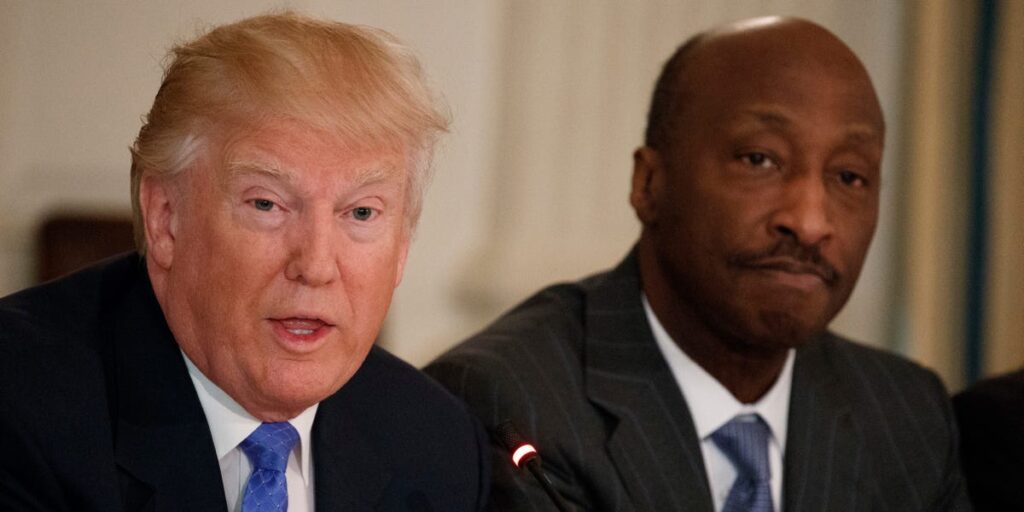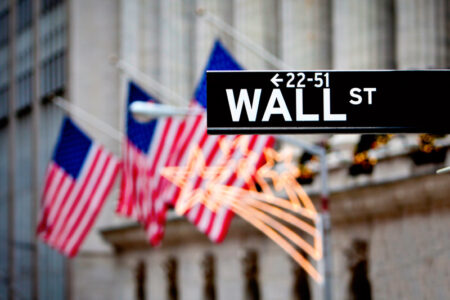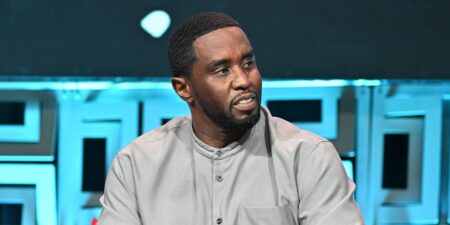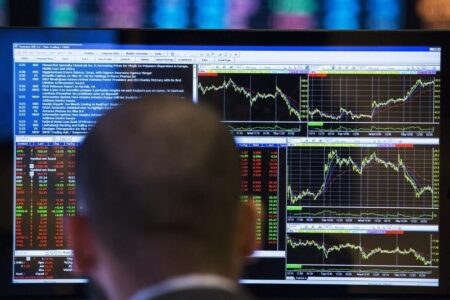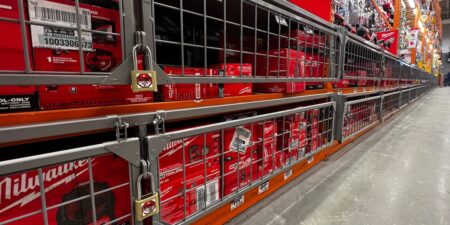When Donald Trump first ran for the presidency, he pledged to run the United States like a business.
“If we could run our country the way I’ve run my company, we would have a country that you would be so proud of,” he said during an October 2016 debate with his then-opponent, former Secretary of State Hillary Clinton.
After Trump was elected to the White House, he brought along key figures like financier and film producer Steve Mnuchin, who became his Treasury secretary; onetime Goldman Sachs president Gary Cohn, who became the director of the National Economic Council; and businessman Wilbur Ross, who served as Commerce secretary.
Leaning in to his pro-business ideology, Trump worked to cut regulations across the federal government and signed into law his signature $1.5 trillion tax plan that Republicans were able to muscle through Congress as the majority party. The plan, which was opposed by congressional Democrats, was the broadest overhaul of the tax code in decades.
For much of the business community, the law, which slashed the corporate tax rate from 35% to 21%, was a long-awaited achievement.
But Trump’s presidency also featured some high-profile clashes that, over time, caused him to become a polarizing figure among leaders who often agreed with him on many policy issues. As Trump touts his past stewardship of the economy ahead of November, here’s a look at his relationship with the business community during his first term:
One of their own
Decades before Trump went into national politics, he rose to national prominence as a wealthy real estate developer and businessman. As a presidential candidate, Trump’s background was unique in that he had neither served as a governor or as a member of Congress, nor did he have a military background.
But in a presidential year when many GOP voters were looking for a change agent, his business background gave him a major boost as a political outsider.
For many in the business world, Trump was essentially one of their own. His relationship with top corporate leaders started off on a high note, especially after he hosted a dozen chief executives (which included Tesla founder Elon Musk) at the White House during his first week in office, where he emphasized his desire to enact tax cuts.
However, Trump’s relationships with many of these leaders disintegrated in the aftermath of the August 2017 Unite the Right rally in Charlottesville, Va., where white nationalist groups unleashed a wave of violence. Heather Heyer, a 32-year-old woman who was assembled with a crowd of counter-protesters in downtown Charlottesville, was killed after a white supremacist drove into the group.
Trump, days after the incident, sought to highlight that some attendees were protesting the removal of a Confederate statue and weren’t in Charlottesville to cause trouble, but the remarks backfired spectacularly.
“You had some very bad people in that group, but you also had people that were very fine people, on both sides,” he said. “I’ve condemned neo-Nazis. I’ve condemned many different groups. But not all of those people were neo-Nazis, believe me. Not all of those people were white supremacists by any stretch.”
After the comments, Kenneth Frazier, then the chief executive of Merck, stepped down from Trump’s manufacturing council.
“America’s leaders must honor our fundamental values by clearly rejecting expressions of hatred, bigotry, and group supremacy, which run counter to the American ideal that all people are created equal,” he said at the time.
Under Armour’s Kevin Plank, 3M’s Inge Thulin, and Intel’s Brian Krzanich, among others, resigned as well.
Trump then abruptly disbanded the American Manufacturing Council and the Strategic and Policy Forum.
The infrastructure plot
Trump in July 2017 signed an executive order for the creation of an infrastructure advisory council, similar to his other councils, but he eventually nixed it.
The inaction regarding the infrastructure council mirrored Trump’s eventual inaction in advancing a comprehensive infrastructure plan, despite his contention that he would rebuild America’s roads and bridges, especially in the hard-hit Rust Belt communities that were struggling to recover from factory closures and declining tax bases.
Even the promise of an “Infrastructure Week” became a long-running punchline. Trump put forward plans to spend between $1 trillion and $1.5 trillion on infrastructure in both 2017 and 2018.
But he became sidetracked whenever he sought to lay out a plan.
During a Rose Garden event in June 2017, Trump accused the former FBI director Jim Comey of lying under oath before Congress — taking him away from his intended focus on infrastructure. In August 2017, a Trump Tower event meant to provide updates about Trump’s infrastructure plan became dominated by his response to the violence in Charlottesville. And in February 2018, Trump’s infrastructure proposal took a back seat amid accusations of misconduct by two close aides.
Trump’s plans to repair the nation’s bridges, ports, and railways didn’t move forward in 2018 — even though the GOP had full control of Congress until January 2019.
“We have a very important election coming up, and they don’t like the wins we’ve been getting,” Trump said in 2018, seeking to shift blame on the infrastructure inaction to Democrats.
Even after the 2018 midterms — when Democrats retook the House but Republicans retained control of the Senate — Trump never got a major infrastructure plan through Congress.
That task became a rallying call for his successor, President Joe Biden, who in November 2021 signed into law a landmark $1 trillion infrastructure bill, which funded everything from port upgrades and Amtrak grants to critical bridge repairs and high-speed broadband.
Turning to tech
During the 2016 presidential race, many top tech executives threw their support behind Clinton’s campaign.
But after the election, Trump invited a broad array of tech leaders to Trump Tower and expressed a desire to work with them on innovation. During the December 2016 meeting, the group spoke about job creation, trade, and infrastructure, according to Trump’s then-transition team.
One of those leaders in attendance was Musk, years before he’d go on to acquire Twitter and rebrand it as X.
In June 2016, Trump met with top tech executives including Apple’s Tim Cook and Amazon’s Jeff Bezos to devise a solution for overhauling the federal government’s information technology systems. But the meeting came as many leaders remained staunchly opposed to Trump withdrawing the US from the Paris climate accord earlier that month. (Biden rejoined the agreement in January 2021.)
Cook at the time told Apple employees that he tried to convince Trump to remain in the accord, but said his appeal “wasn’t enough.”
In 2020, several tech leaders — including Cook — were critical of Trump’s visa restrictions that would impact highly-skilled foreign workers in the industry. The Trump administration at the time said the move was made to afford positions to American workers during the pandemic.
Cook at the time said he was “deeply disappointed” by the move.
“Like Apple, this nation of immigrants has always found strength in our diversity, and hope in the enduring promise of the American Dream,” the executive added.
Ahead of the November election, Trump is looking to Silicon Valley — where Biden has considerable support — as he looks to erase a sizable financial gap with his Democratic rival.
Read the full article here



